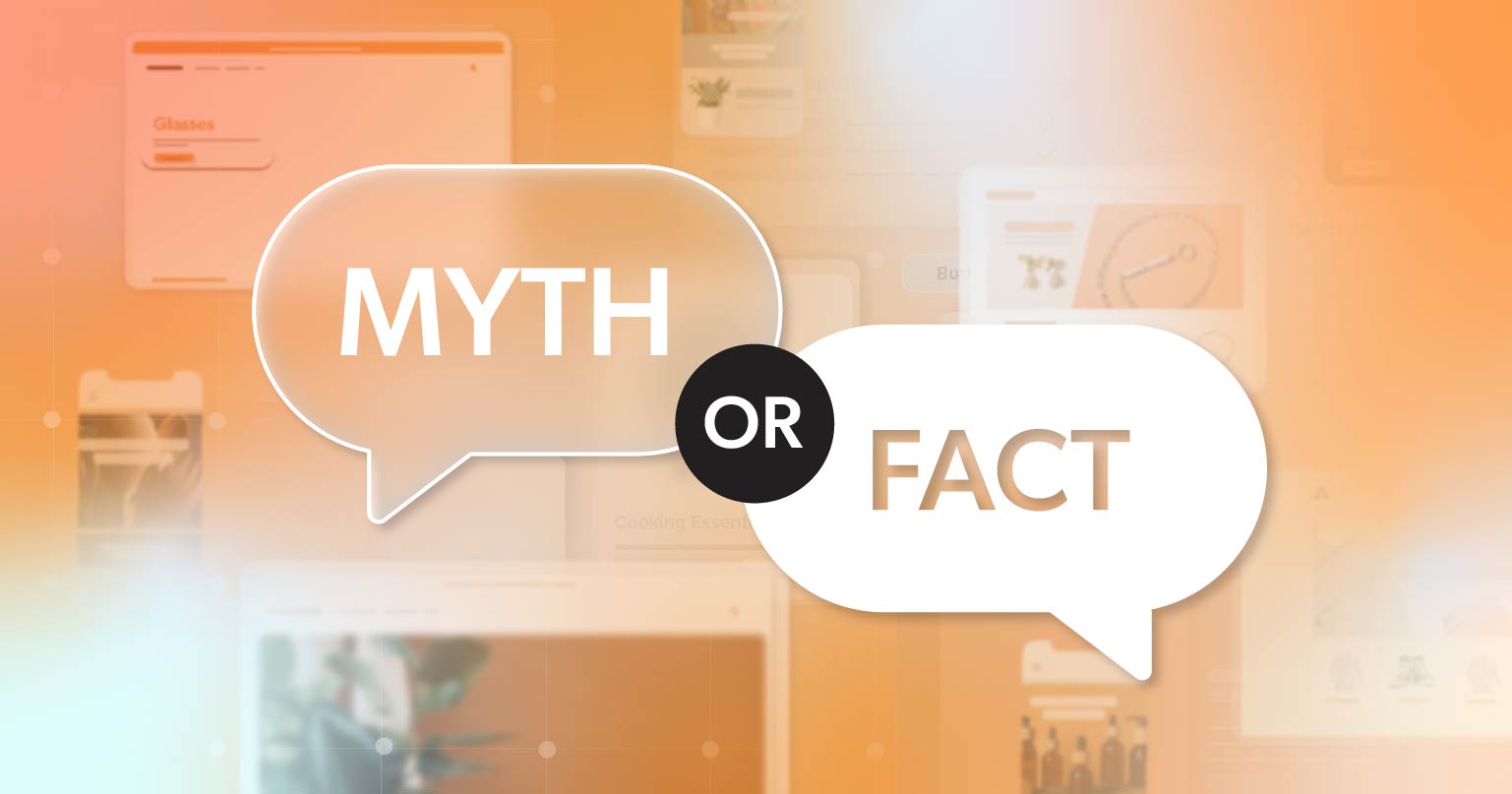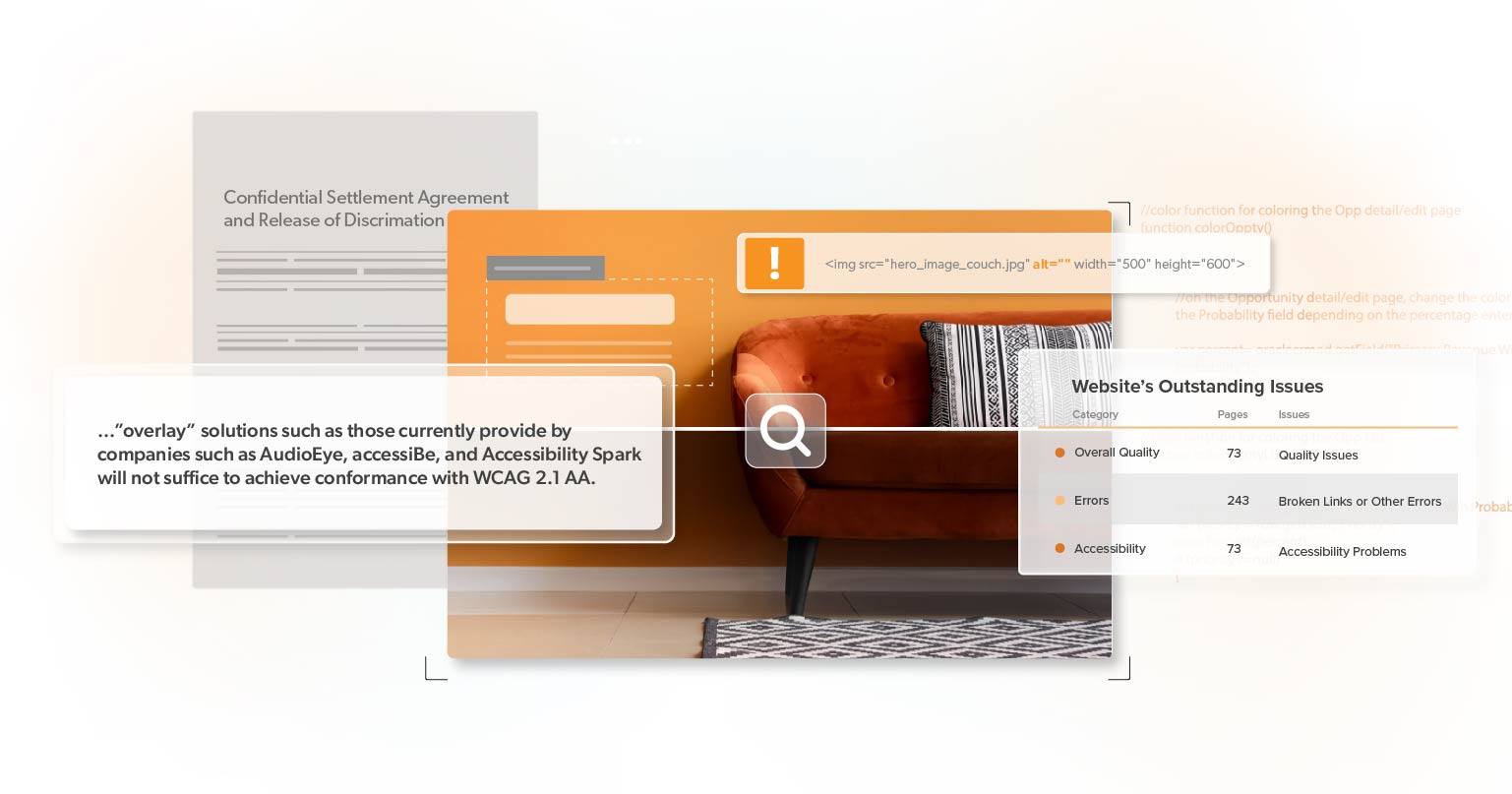You’ve probably seen accessibility overlays advertised as a quick and easy way to make websites compliant with accessibility laws. Companies promoting these tools claim they can fix accessibility issues with just a few lines of code, no major effort required. Sounds great, right?
Not so fast.
Leading accessibility organizations, including the European Disability Forum (EDF) and the International Association of Accessibility Professionals (IAAP), strongly disagree. In fact, they’ve openly criticized these tools, pointing out that overlays not only fail to meet accessibility standards but can actually make websites harder to use for people with disabilities.
If you’re a website owner, this is something you need to know—because relying on an overlay could be doing more harm than good. Let’s break down why EDF and IAAP are speaking out, the biggest issues with overlays, and what you should be doing instead.
What Are Accessibility Overlays?
Accessibility overlays are automated software tools designed to modify a website’s appearance and functionality in an attempt to improve accessibility. They might add features like screen reader support, color contrast adjustments, or keyboard navigation enhancements—all without requiring direct changes to the website’s underlying code.
Sounds convenient, but here’s the catch: overlays don’t actually fix accessibility issues. They just try to patch over them.
Many companies claim their overlays help websites comply with Web Content Accessibility Guidelines (WCAG), the Americans with Disabilities Act (ADA), and the European Accessibility Act (EAA). But accessibility experts, as well as actual users with disabilities, say otherwise.
Why Are EDF and IAAP Against Accessibility Overlays?
EDF and IAAP have outlined several major concerns about accessibility overlays. Their stance isn’t just theoretical—it’s backed by research, real-world testing, and feedback from people who rely on assistive technologies. Here’s what they found:
1. Overlays Don’t Actually Fix Accessibility Issues
Accessibility isn’t just about how a site looks—it’s about how it functions. Many accessibility issues, such as missing form labels, poorly structured headings, and inaccessible interactive elements, cannot be fixed by an overlay. These require changes to the website’s actual code.
An overlay might tweak things on the surface, but under the hood, the same barriers remain.
2. Accessibility Overlays Can Interfere with Assistive Technologies
People who rely on screen readers, voice control software, or switch devices often report that overlays make their experience worse. Instead of improving accessibility, overlays can clash with assistive technologies, leading to confusing and frustrating experiences.
Imagine trying to navigate a site with a screen reader, only to have an overlay forcing adjustments you didn’t ask for or use their screen reader instead. That’s the reality for many users.
3. Overlays Create a False Sense of Compliance
One of the most dangerous aspects of overlays is the illusion of accessibility they create. A business might think they’ve “checked the box” just by installing an overlay, but in reality, they could still be violating accessibility laws.
This false security can leave companies vulnerable to legal action—and even worse, it fails to make websites truly accessible.
4. Businesses Using Overlays Still Get Sued
Think an overlay will protect you from lawsuits? Think again.
In 2024, over 1,000 businesses that utilized overlays faced accessibility lawsuits according to Useablnet’s 2024 End of the Year Report. Courts have consistently ruled that overlays don’t meet legal requirements under the ADA and other accessibility laws. In some cases, overlays have even been used as evidence that a company ignored real accessibility fixes.
5. Users with Disabilities Strongly Oppose Accessibility Overlays
The people who actually rely on accessible websites have spoken: they don’t like overlays.
Advocates and individuals with disabilities have repeatedly criticized overlays for making web browsing harder, not easier. Instead of solving accessibility challenges, overlays often introduce new problems, disrupting the way users navigate and interact with content.
A New York Times article, For Blind Internet Users, the Fix Can Be Worse Than the Flaws, highlights just how frustrating overlays can be. As Mr. Perdue, a blind user, put it: “I’ve not yet found a single one that makes my life better. I spend more time working around these overlays than I actually do navigating the website.”
When the very tools meant to help people with disabilities end up making their experience worse, it’s clear that overlays are not the solution.
6. Overlays Can Introduce New Barriers
Rather than eliminating accessibility issues, overlays often create more obstacles.
Some force unwanted settings on users, preventing them from using their own assistive technology configurations. Others introduce navigation loops, trapping users on certain pages or making it impossible to interact with important website elements.
If an accessibility “fix” creates more accessibility problems, is it really a fix at all?
What Should Website Owners Do Instead?
If accessibility overlays aren’t the answer, what is? The good news is that true accessibility is achievable—and it starts with the right approach.
1. Conduct a Proper Accessibility Audit
Before making changes, you need to know what’s broken.
An accessibility audit helps identify barriers on your site by testing against WCAG standards. The best audits combine automated scans with manual testing, including feedback from users with disabilities.
2. Fix Accessibility Issues at the Code Level
The only way to ensure true accessibility is to build it into the foundation of your website. This means:
- Using semantic HTML for a clear page structure
- Ensuring all interactive elements are keyboard-accessible
- Providing text alternatives for images, videos, and other non-text content
- Implementing ARIA attributes where needed for better screen reader support
3. Involve Users with Disabilities in Testing
Want to make sure your site is actually accessible? Ask the people who need it most.
Incorporating real-world feedback from users with disabilities during usability testing helps uncover issues that automated tools might miss.
4. Train Your Team on Accessibility Best Practices
Accessibility isn’t just a one-time fix—it’s an ongoing commitment.
Educating your developers, designers, and content creators about accessibility best practices ensures that your website remains accessible long-term.
5. Monitor and Maintain Accessibility Over Time
Websites change all the time—so does accessibility.
Regular testing, monitoring, and updates are key to keeping your site accessible. Tools like a11y.Radar can help businesses track and maintain compliance as their website evolves.
Conclusion
EDF and IAAP have made one thing clear: accessibility overlays are not the answer.
They don’t fix real accessibility issues, they interfere with assistive technologies, and they create a false sense of security that leaves businesses exposed to legal risk. Worse, they fail the very people they’re supposed to help.
So, what’s the better approach? Real, lasting accessibility.
That means conducting audits, making code-level fixes, listening to users with disabilities, and maintaining accessibility over time. Not only is this the right thing to do, but it’s also the best way to protect your business from legal trouble and create an inclusive digital experience.
You don’t have to do it alone. 216digital can help you navigate accessibility the right way—with real solutions that work. Schedule an ADA Briefing today and take the first step toward a truly accessible website.




